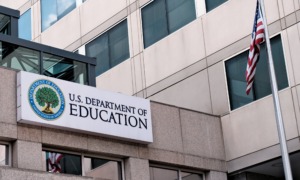Had Madonna decided to adopt her children from, say, Michigan instead of Malawi, she would have saved herself a lot of grief, and a little bit of money.
In fact, Madonna actually would have been eligible for a subsidy from the state of Michigan for adopting the children from that state’s foster care system. Where would cash-strapped Michigan get the funds to subsidize Madonna’s adoption? From money saved by throwing poor people off welfare.
Michigan helps pay for its adoption subsidies by using surplus federal funds from the Temporary Assistance for Needy Families program. TANF is the program that replaced welfare as we knew it in 1996. In the intervening years, it’s become a child welfare slush fund, siphoning hundreds of millions of dollars from poor people into the pockets of middle-class foster and adoptive parents, and even into child abuse investigations.
Congress will need to reauthorize TANF, and part of that reauthorization should include shutting down the child welfare slush fund.
It wasn’t supposed to work that way, of course.
In theory, the savings generated by creating one hoop after another for poor people to jump through before they could get aid (sometimes in ways almost unspeakably cruel, as documented in this Mother Jones story) were supposed to be used to help poor people become self- sufficient.
Indeed, family preservation – “assisting needy families so that children can be cared for in their own homes” – is one of four permitted uses for TANF surplus money. The others are:
*Reducing the dependency of needy parents by promoting job preparation, work and marriage;
*Preventing out-of-wedlock pregnancies
*Encouraging the formation and maintenance of two-parent families.
Nothing in there about helping people as rich as Madonna adopt a child, or paying for child protective services to investigate families.
But there’s a loophole: One part of the old welfare program, Aid to Families with Dependent Children, could be used for some child welfare expenses. And states that were using it that way were allowed to keep doing it with their TANF surpluses. So a slush fund was born.
Child Trends reports that, as of 2006, the most recent year for which data are available, TANF was the second largest source of federal funds for child welfare, behind only Title IV-E, the giant open-ended entitlement for foster care and adoption. States spent nearly $2.4 billion in TANF funds for child welfare.
Some of that funding is entirely in keeping with both the letter and the spirit of the law. For example, a lot of TANF funding goes to help grandparents and other relatives provide kinship foster care in cases that are not eligible for IV-E funds.
But some of the money is simply a transfer of funds from the poor to the middle class, with enormously destructive consequences for children.
As we document in our report on Michigan child welfare, that state now funds almost all of its child abuse prevention and family preservation programs with TANF surplus funds. Yes, those uses are in keeping with TANF’s goals, but the money should be used to augment state funding, not replace it. As it stands now, money is taken away from programs to help poor people become self sufficient (and thereby keep their children) to fund other programs to do essentially the same thing. Michigan takes away with one hand what it gives with the other.
Other states are worse. For many years, Texas did what Michigan did, relying on TANF to fund prevention and family preservation. But in 2004, Texas eliminated TANF funding for several prevention programs, while increasing TANF funds for investigations and foster care.
In Connecticut, the Hartford Courant reported that, in just a single year, more than $120 million in funds that could have gone to provide low income day care was diverted. Instead, the money went to pay for child abuse investigators who take away children on “lack of supervision” charges – charges that may arise when a working parent can’t afford day care. This TANF surplus money also went to the strangers who then take those children into their own homes as foster parents.
In October, Nebraska – which year after year takes away proportionately more children than almost any other state – announced it would take at least $6 million in TANF emergency funds, provided as part of the economic stimulus bill, and use it to free up $6 million in state general revenue to spend on trying to salvage the state’s collapsing effort to privatize its foster care system.
And then there is the Madonna loophole. While Michigan uses TANF money for adoption subsidies, Ohio uses TANF money for adoption services that include one-time “incentive payments” – in other words, bounties – paid to adoptive parents, without regard to the adoptive parents’ income. In effect, these states picking the pockets of poor people in order to help the wealthy adopt poor people’s children.
Child protective services investigations, foster care and adoption all are vital services – for some children. All of them need to be funded. And there is a good case for providing adoption subsidies without a means test. But none of it should be funded with what amounts to poor people’s money.
And all of those services would be needed less if those same TANF surplus funds were directed back into their intended purpose: Helping impoverished families become self-sufficient – at which point, many fewer of them ever would be taken away in the first place.
Richard Wexler is Executive Director of the National Coalition for Child Protection Reform, www.nccpr.org





























